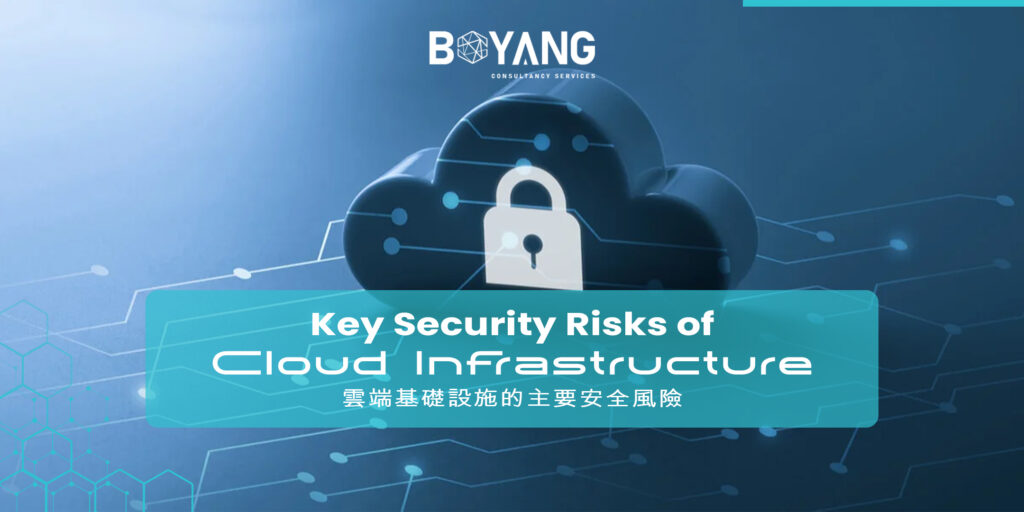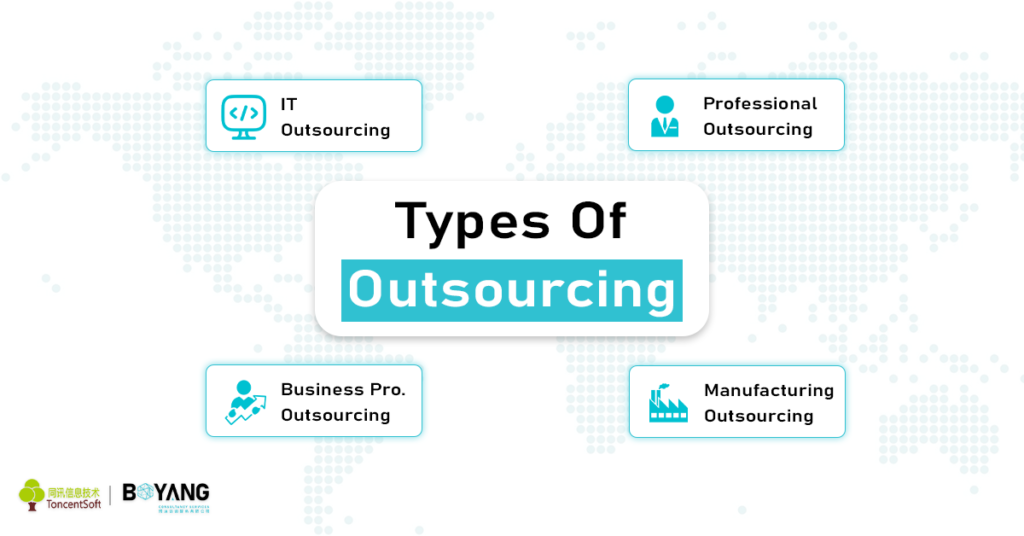The security risks of cloud computing has been top problem worldwide. As cloud computing market in Hong Kong and China continues to a staggering $1,240.9 billion by 2027, understanding the security risks of cloud computing is essential for businesses. Although cloud computing environments may introduce certain cybersecurity threats, compared to traditional on-premises systems. While cloud computing security offers many advantages. This article will eloborate the security risks of cloud computing (雲端基礎設施的主要安全風險) with all types, importance, prevention and best practices to help organizations make informed decisions.
Types of Security Risks of Cloud Computing
Before the benefits of cloud computing security, understanding the types of security risks of cloud computing is essential which every organization must address. Here are all the types of security risks of cloud computing 雲端基礎設施的主要安全風險:
1. Insecure APIs
APIs (Application Programming Interfaces) are essential for cloud services, enabling communication between different software applications. However, insecure APIs can expose sensitive data and systems to cyber threats. Poorly designed or inadequately secured APIs can be exploited by attackers to gain unauthorized access or manipulate data. To mitigate this risk, organizations should prioritize secure API development practices and regularly test and update APIs for vulnerabilities.
2. Data Breaches
Data breaches are a significant concern in cloud computing environments. Cloud providers often store vast amounts of sensitive information, making them attractive targets for cybercriminals. Unauthorized access, weak access controls, or misconfigured permissions can lead to data breaches, resulting in financial losses and reputational damage. Implementing robust access controls, encryption, and continuous monitoring can help protect against data breaches.
3. Compliance Issues
Organizations must ensure that their cloud environments comply with industry regulations and data protection laws. Failure to meet compliance requirements can result in legal penalties and loss of customer trust. To address compliance issues, businesses should conduct regular audits, implement strong data governance policies, and work closely with cloud providers to ensure compliance with relevant regulations.
4. Data Loss
While cloud storage is highly resilient, it is not immune to data loss. Factors such as hardware failures, natural disasters, or ransomware attacks can result in data loss. Regular data backups, redundancy measures, and disaster recovery plans are essential to minimize the impact of data loss and ensure business continuity.
5. Account Hijacking
Account hijacking occurs when attackers gain unauthorized access to cloud accounts using stolen credentials. This can lead to data theft, unauthorized actions, and significant disruptions. Implementing multi-factor authentication (MFA), monitoring account activity, and educating users about password security are effective measures to prevent account hijacking.
6. Insider Threats
Insider threats pose a unique challenge in cloud environments. Employees or contractors with access to sensitive data may intentionally or unintentionally compromise security. Implementing strict access controls, monitoring user activity, and providing security training can help mitigate insider threats.
7. Misconfiguration
Misconfigured cloud settings can expose organizations to security risks. Cloud environments are complex, and incorrect configurations can lead to unauthorized access, data exposure, or other vulnerabilities. Regularly reviewing and validating cloud configurations, conducting security assessments, and using automated tools can help identify and rectify misconfigurations.
8. DDoS Attacks
Distributed Denial of Service (DDoS) attacks aim to overwhelm cloud resources, rendering services unavailable. These attacks can disrupt business operations and result in financial losses. Cloud providers often offer DDoS protection services, and organizations should leverage these services to defend against such attacks.
9. Malware
Cloud environments are not immune to malware attacks. Malicious software can infiltrate cloud systems, leading to data theft or corruption and execute phishing attacks. Implementing strong antivirus solutions, regularly updating software, and educating users about safe computing practices is crucial for preventing malware infections.
10. Human Error
Human error is a common cause of security incidents in cloud environments. Employees may inadvertently expose data or misconfigure settings, leading to vulnerabilities. Providing comprehensive security training and promoting a culture of awareness can help reduce the likelihood of human error.
11. Shadow IT
Shadow IT refers to the use of unauthorized cloud services within an organization. This can lead to security gaps and data leaks. Organizations should implement policies to manage and monitor cloud service usage, ensuring that all services are approved and comply with security standards.
12. Unauthorized Access
Unauthorized access to cloud resources can result in data breaches and other security incidents. Implementing strong authentication mechanisms, access controls, and encryption can help prevent unauthorized access to sensitive data.
13. Unmanaged Attack Surface
Cloud environments expand an organization’s attack surface, making them more vulnerable to cyber threats. Regularly assessing and managing the attack surface, identifying potential vulnerabilities, and implementing security measures are critical for reducing risks.
14. Cloud Misconfigurations
Cloud misconfigurations are a leading cause of security incidents. Organizations should regularly review and update their cloud configurations to ensure compliance with security best practices and minimize risks.
15. Data Leakage
Data leakage occurs when sensitive information is unintentionally exposed to unauthorized parties. Implementing encryption, monitoring data flows, and conducting regular audits can help prevent data leakage.
16. Malicious Insiders
Malicious insiders can intentionally exploit their access to cloud resources for personal gain or to harm the organization. Implementing strict access controls, monitoring user activity, and conducting background checks can help mitigate the risk of malicious insiders.
17. Access Management
Effective access management is crucial for securing cloud environments. Implementing multi-factor authentication, regularly reviewing user permissions, and revoking access for users who no longer require it are essential practices.
18. Continuous Monitoring
Continuous monitoring of cloud environments is essential for identifying and responding to security threats in real time. Implementing advanced monitoring tools and establishing incident response protocols can help organizations detect and mitigate security incidents.
19. Cyberattacks
Cloud environments are attractive targets for cybercriminals due to the vast amount of data they store. Organizations must implement robust security measures to protect against cyber attacks, including firewalls, intrusion detection systems, and threat intelligence solutions.
20. Identity and Access Management
Identity and Access Management (IAM) is a critical component of cloud security. Implementing IAM solutions that enforce strong authentication and authorization policies can help prevent unauthorized access to cloud resources.
21. Inadequate Due Diligence
Organizations must conduct thorough due diligence when selecting cloud providers. Inadequate due diligence can lead to security gaps and compliance issues. Businesses should evaluate providers’ security practices, compliance certifications, and service-level agreements (SLAs) to ensure they meet security requirements.
22. Lack of Visibility
Lack of visibility into cloud environments can hinder an organization’s ability to detect and respond to security threats. Implementing monitoring and logging solutions, conducting regular security assessments, and working closely with cloud providers can enhance visibility and improve security posture.
23. Limited Visibility
Limited visibility into cloud environments can leave organizations vulnerable to security threats. Implementing advanced monitoring tools, conducting regular audits, and establishing clear communication with cloud providers can help address visibility challenges.
Infrastructure Security of Cloud Computing
Cloud security encompasses a range of controls, procedures, and technologies designed to protect critical systems and data against cybersecurity threats in cloud environments. To effectively secure a cloud environment, organizations must address the following key security issues:
- Large Attack Surface: Defining the boundaries of a cloud environment can be challenging, as systems and data may be accessed from multiple angles, including personal devices of remote employees, unauthorized third-party applications, and public networks. Data can be attacked both at rest and in transit.
- Lack of Visibility: Some cloud providers maintain full control over their IT infrastructure without exposing it to customers. Organizations may struggle to identify cloud assets and track employee activity, complicating efforts to protect data efficiently.
- Complexity of Environments: Multi-cloud and hybrid environments, favored by some organizations for specific needs, introduce complexities in choosing appropriate cybersecurity tools that operate both in the cloud and on-premises. These environments require a holistic approach to cybersecurity.
While cloud service providers excel at protecting data from external threats, the human factor remains a critical vulnerability. Employees can inadvertently facilitate cyberattacks, highlighting the need for robust cloud security measures.
Importance of Security in Cloud Computing
The importance of security in cloud Computing is key for interrupt-free business growth. The biggest cyber security issue has been, to keep applications and data protected against cybercriminals. Adopting best practices for cloud security is essential for organizations to secure their virtualized IT environments. Prioritizing cloud computing security offers several benefits:
- Protect Sensitive Data: Data breaches can have severe consequences, damaging reputations, leading to financial penalties, and causing legal issues. Implementing best practices helps protect critical cloud assets.
- Maintain Business Continuity: A secure cloud infrastructure ensures business continuity during disruptions or disasters. Cloud backups and disaster recovery plans aid in quick recovery and minimize downtime.
- Ensure IT Compliance: Robust cloud security measures help meet cybersecurity requirements of various laws and regulations, reducing legal and financial risks.
- Reduce Security Costs: Preventing cybersecurity incidents and maintaining operational continuity optimize costs, reducing the financial impact of potential security incidents.
By implementing a comprehensive cloud infrastructure security strategy, organizations can ensure the confidentiality, integrity, and availability of valuable business assets in the cloud.
Cloud Computing Security Best Practices
Implementing a combination of cybersecurity strategies, processes, and solutions is very important to protect cloud environments. Here are seven best practices for cloud data security:
- Secure Access to the Cloud: Enhance password management with policies requiring complex and regularly rotated passwords. Deploy centralized password management solutions and enable two-factor authentication (2FA) for a zero-trust approach.
- Manage User Access Privileges: Follow the principle of least privilege, granting users only necessary access to perform their jobs. Regularly reassess and revoke user permissions to limit potential damage from compromised accounts.
- Provide Visibility with Employee Monitoring: Use monitoring solutions to detect early signs of account compromise or insider threats. Monitor both employee and third-party activity to identify unusual behavior and potential risks.
- Monitor Privileged Users: Keep track of privileged users, such as system administrators and top management, to reduce risks associated with excessive access rights. Monitor their activity and manage access permissions to prevent unauthorized actions.
- Educate Employees Against Phishing: Raise cybersecurity awareness through regular training and simulated phishing attacks. Teach employees to recognize signs of phishing and social engineering to prevent data breaches.
- Ensure IT Compliance Requirements: Define applicable standards and regulations for your industry and ensure compliance. Consider hiring a data protection officer (DPO) for expert guidance in cybersecurity and IT compliance.
- Efficiently Respond to Security Incidents: Develop an incident response plan with defined roles and procedures for different scenarios. Use monitoring tools to detect and respond to incidents promptly, minimizing damage and ensuring data protection.
Conclusion
Cloud computing offers tremendous benefits, such as flexibility and cost efficiency, but it also introduces unique cybersecurity challenges. Understanding these challenges and implementing the seven best practices—focusing on access control, privilege management, employee education, and incident response—can significantly enhance the protection of your cloud infrastructure. Organizations must work closely with reputable cloud providers, conduct regular security assessments, and foster a culture of security awareness to safeguard sensitive data and comply with cybersecurity standards.
For those seeking a comprehensive cloud security solution, the Boyang cloud infrastructure security as services with advanced capabilities that have already proven beneficial to clients in Hong Kong and China. Request access to the online demo or consultation to see how Boyang can elevate your cloud computing security strategy. With Boyang, businesses can confidently reap the benefits of cloud computing while mitigating risks and ensuring a secure environment.




